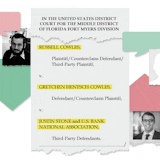SEATTLE – Boeing Co. will propose to regulators as early as this week a short-term fix to bolster the 787's defenses in case of battery fires like those that have kept the jets grounded for the past month.
The goal is to get the planes flying passengers again, according to multiple sources with knowledge of the matter, while Boeing works on a comprehensive redesign of the lithium-ion battery system that could take nine months or more to implement.
The interim fix includes a heavy-duty titanium or steel containment box around the battery cells, and high-pressure tubes that, in the event of a battery fire, would vent any gases directly to the outside of the jet.
Boeing's approach acknowledges that four weeks after two batteries overheated — one catching fire on the ground, the other smoldering in flight — investigators haven't pinpointed the cause.
That leaves Boeing little choice for now but to engineer a workaround that will better contain any such incident and protect the airplane.
But it's unclear if the FAA is ready yet to accept containment of an overheated battery rather than prevention.
"We're not there yet," said a government official with knowledge of the ongoing discussions, who asked for anonymity. "It wouldn't surprise me if we're still talking weeks [from now] before everyone is comfortable" with the workaround that Boeing is suggesting.
Even if the FAA agrees, the short-term fix will take at least three months to design, test, certify and retrofit, said an Everett, Wash., source who knows details of Boeing's proposed solutions.



